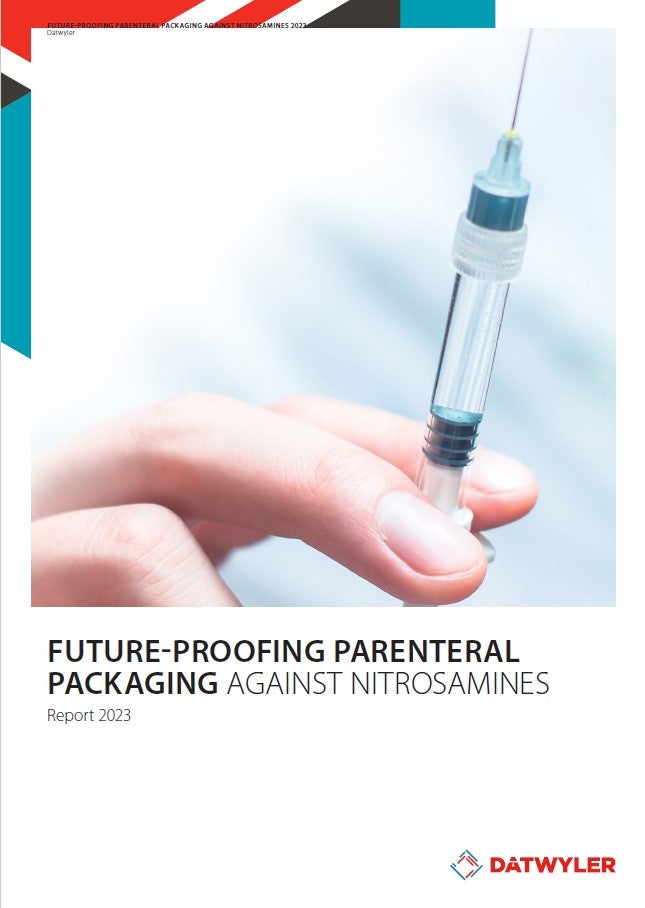
Particles are everywhere in the world around us, but one of the last places we want them is in our sterile biologic products. Yet the reality is that even in the cleanest of cleanrooms, a minute level of particulate should still be assumed to exist, and it can find its way into controlled drug products through a variety of ways – including primary packaging components.
“The scariest thing about a particle is that is in an uncontrolled substance,” says Gabrielle Gehron, Technical and Scientific Expert at parenteral packaging company Datwyler. “Since it could be anything, it can react with the drug product in any number of ways. One small particulate might not be likely to do much harm, but a large particle load could do anything from sucking up Active Pharmaceutical Ingredients to decreasing the effectiveness of a drug product.”
There can also be effects to the patient should they receive a dose of a drug product that has been contaminated with particulate. “Most particles are captured and emitted by the body’s natural immune system without causing harm to the patient,” Gehron adds. “Excessive particulate, however, can increase inflammation values and even cause an immune response. This is especially risky for those who may be most likely to receive an injection – namely, patients who are already sick. “
The risks can be particularly high in intraocular (ophthalmic) injections, she adds. The United States Pharmacopeia addresses this risk explicitly in USP <789>, stating that “ophthalmic solutions should be essentially free from particles that can be observed on visual inspection”. The concern is based on the fact that large particles have the potential to hinder the patient’s vision.
While particulates are physically small, their significance is not hard to see. Analysis of drug recall data from the Food and Drug Administration has shown that contamination from particles, chemicals, and microbes was the leading cause of US recalls in 2022. Pharmaceutical companies and their packaging component providers must implement measures to reduce the event of particulate contamination in their products. This begins with particle identification and categorisation.
Categorising particulate in drug products
Particles can be categorised in a variety of ways. Firstly, size. Particulate is often talked about as being either visible or subvisible, with ISO 8871 defining visible particulate as those above 25 µm. However, this assumes the use of microscopes. The naked eye may not be able to reliably identify particles unless they are at least 100-150 µm in size.
Another way to think about particles is whether they are loose or embedded. “In general, embedded particles may be less likely to fall off of the component and enter the drug product – and therefore the patient,” says Gehron. “Alternatively, loose particles are sometimes easier to see, and are easier to remove, so they may be caught before they make their way into a patients’ bloodstream.”
The third way of categorising particulate is the material, which may be identified via visual inspection or through lab analysis. According to a survey that analysed quality data from component manufacturers and pharmaceutical companies, cellulose from paper is believed to make up 60.9% of particulate contamination in injectable products. Other commonly identified materials were polyester (at 9.7%), silicone (3.8%), polyamide (3.2%), polypropylene (2.7%), and hair (2.1%).
Once you know the material, it is important to consider origin. Is the particle inherent due to the nature of the product itself, such as an unincorporated ingredient? Is it intrinsic from the production process such as a drop of processing agent? Or is it extrinsic to the product and its process, such as a human hair?
With particulate material and the source of contamination identified, it is possible to limit contaminations and thereby reduce particulate. For example, upon seeing the aforementioned cellulose data, Datwyler switched to a paperless manufacturing environment at its FirstLine® manufacturing sites, thus reducing the potential for this type of contamination.
Reducing particulate risk with FirstLine
Datwyler’s FirstLine manufacturing environment is epitomised by what the company calls its “zero-defect philosophy”, and limiting particulate is a key part of this. FirstLine facilities use automation wherever possible in order to limit humans as a source of particulate risk. The facilities are designed in such a way as to allow for a flow of raw materials and product from least controlled environment to most controlled, with stricter cleanroom classifications and gowning procedures as manufacturing progresses. Advanced camera inspection systems eject components with large visible particles automatically, and any final subvisible particulate load can then be eliminated through Datwyler’s validated washing process and sterilization options.
All of this has put Datwyler at the top of its game when it comes to quality and particulate reduction in elastomeric parenteral packaging supply, but Gehron says the company is still looking for ways to advance: “We are constantly looking for ways to improve, and take into account any quality events that occur in a given year to help us grow in our capabilities.”
To learn more about the risk of contamination in drug products and how the right choice of parenteral packaging components can eliminate this, please download the whitepaper below.



